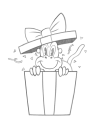Art of Caricature
Fundamental Skills(60 Lessons )
Build Your Caricature Muscles(71 Lessons )
Checklist
Memory Sketching
Caricature of a Caricature
Opposition Sketching
Spirit Animal
Digital Paint Sketching
Studying the Masters
Shape Design and Facial Features
Conclusion
Bonus Content
Give a gift
Give a gift card for art students to use on anything in the Proko store.
Or gift this course:

About instructor
Freelance commercial illustrator and caricature entertainer. He’s done a lot of editorial and product illustration and concept work for film and TV.










Assignments
Your assignment is to choose a caricature by another artist you admire and do a study of it, focusing on copying the shapes and values as best you can. It’s not important to use the same materials the artist did. If the original is a painting or a sculpture, you can still use pencil or charcoal to do the study. The important takeaway from this exercise is in [studying how that artist exaggerated] his or her shapes and to a lesser extent, how they rendered the forms. And if you are able to find the original photo reference they used, that can help give you some additional perspective into the artist’s decisions as well.
After you have completed your study of another artist’s work, do an original caricature in the style of that artist, utilizing the exaggeration choices you learned from the initial study.